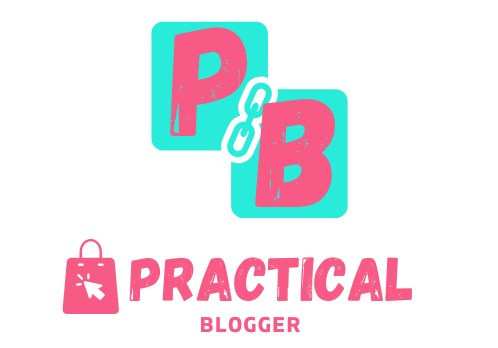Learn how to enhance your website’s visibility and rankings with effective SEO site optimization. Explore essential strategies, tips, and best practices in this comprehensive guide.
- Introduction to SEO Sites
- Chapter 1: Understanding SEO Site Optimization
- Chapter 2: The Importance of SEO Site Optimization
- Chapter 3: On-Page SEO vs. Off-Page SEO
- Chapter 4: Keyword Research and Selection
- Chapter 5: On-Page SEO Best Practices
- Chapter 6: Technical SEO Site Optimization
- Chapter 7: User Experience and SEO
- Chapter 8: Monitoring and Measuring SEO Success
- Chapter 9: Content Creation and SEO
- Chapter 10: SEO Site Optimization Tools
- Chapter 11: SEO Site Optimization Best Practices
- SEO Site – Overview
- SEO Site Optimization – FAQ
- Best Content for Book Lovers from Practical Blogger!
Introduction to SEO Sites
In the digital age, where online presence can make or break a business, search engine optimization (SEO) has emerged as a critical aspect of digital marketing.
If you’re a website owner, webmaster, or marketer, you’ve likely come across the term “SEO site” or “site optimization” quite frequently. But what exactly does it entail, and how can it help your website stand out in the vast landscape of the internet?
This comprehensive guide aims to demystify the concept of SEO site optimization and provide you with the knowledge and tools necessary to boost your website’s search engine ranking. Whether you’re a beginner looking to get started or an experienced webmaster seeking advanced techniques, we’ve got you covered.
So, let’s dive into the world of SEO site optimization and unlock the secrets to driving organic traffic and achieving online success.
Related SEO Guides from Practical Blogger:
- How To Get More Traffic to Your Website with Off-Page SEO
- The Beginner’s Guide to Off-Page SEO
- How to Hire an SEO Specialist and Get the Most Out of Your Investment
- The SEO Specialist’s Handbook: Your Key to Online Dominance
- Black Hat SEO Exposed: The Risks That Could Sink Your Website
- SEO Writing Mastery: Craft Content that Wows Both Readers and Google!
- SEO Content Writing Wizards: Craft Your Path to Online Stardom
- Boost Your Rankings with SEO Analysis: A Step-by-Step Guide
- Rise to the Top: The Ultimate Competitor Analysis SEO Strategy
- Stay Ahead in the SEO Game: The Ultimate SEO Keyword Analysis Handbook
- Boost Your Business: How Professional SEO Services Work Wonders
Chapter 1: Understanding SEO Site Optimization
Before we delve into the nitty-gritty of SEO site optimization, it’s essential to grasp the fundamentals. Search engine optimization refers to the process of improving a website’s visibility on search engines like Google, Bing, and Yahoo.
When your website ranks higher in search results, it receives more organic (unpaid) traffic, which can lead to increased brand visibility and higher conversion rates.
Chapter 2: The Importance of SEO Site Optimization
Why is SEO site optimization crucial for your website’s success? Here are some compelling reasons:
- Increased Organic Traffic: Websites that appear on the first page of search engine results receive the lion’s share of clicks. SEO site optimization helps you climb those rankings and attract more visitors.
- Enhanced User Experience: SEO isn’t just about search engines; it’s also about providing a better experience for your users. Optimizing your site structure and content can make navigation smoother and more enjoyable for your audience.
- Credibility and Trust: Websites that rank higher are often seen as more credible and trustworthy by users. By optimizing your site, you build trust with your audience and potential customers.
- Competitive Advantage: Your competitors are likely investing in SEO. To stay competitive, you need to keep up or outperform them in the search engine rankings.
Chapter 3: On-Page SEO vs. Off-Page SEO
Before we get into the specifics of SEO site optimization, it’s important to differentiate between on-page and off-page SEO.
- On-Page SEO: This involves optimizing elements on your website itself. It includes optimizing your content, meta tags, images, headings, and internal linking. On-page SEO is within your direct control.
- Off-Page SEO: This pertains to activities that happen outside your website but still impact your rankings. It includes backlink building, social media marketing, and online reputation management.
For the purpose of this guide, we’ll primarily focus on on-page SEO, as it forms the foundation of SEO site optimization.
Chapter 4: Keyword Research and Selection
One of the cornerstones of on-page SEO is keyword research. Keywords are the words and phrases that users type into search engines when looking for information or products. By optimizing your content around relevant keywords, you can increase your chances of ranking well.
Here’s how to conduct effective keyword research:
- Identify Your Niche: Determine the primary topic or niche of your website. Understanding your niche helps you target specific keywords.
- Use Keyword Research Tools: Tools like Google Keyword Planner, Ahrefs, SEMrush, and Moz Keyword Explorer can help you discover relevant keywords and their search volumes.
- Analyze Keyword Competition: Assess the competition for each keyword. Highly competitive keywords may be challenging to rank for, especially if you’re just starting. Consider targeting a mix of competitive and long-tail keywords.
- Focus on User Intent: Consider the intent behind the keywords. Are users looking for information, products, or local services? Tailor your content accordingly.
- Create a Keyword List: Compile a list of target keywords that are relevant to your content and have reasonable search volume. This will serve as your keyword repository.
Chapter 5: On-Page SEO Best Practices
Now that you have your keywords, it’s time to implement them effectively on your website.
Here are some on-page SEO best practices:
- Quality Content: Content is king in the world of SEO. Create high-quality, informative, and engaging content that satisfies the user’s search intent. Use your target keywords naturally and avoid keyword stuffing.
- Optimize Meta Titles and Descriptions: Your meta title and description appear in search engine results. Craft compelling titles and descriptions that entice users to click through to your site. Include relevant keywords, but make it readable and appealing.
- Header Tags: Use header tags (H1, H2, H3, etc.) to structure your content. Your main headline (H1) should include your primary keyword, and subheadings (H2, H3, etc.) can include related keywords.
- Keyword Placement: Besides headers, strategically place your keywords throughout your content, including in the first paragraph, within the body text, and in the image alt text.
- Internal Linking: Link to other relevant pages within your website using anchor text. Internal links help users navigate your site and distribute link equity.
- Optimize Images: Compress and optimize images to improve page load speed. Use descriptive file names and alt tags for images, incorporating keywords when relevant.
- Mobile-Friendly Design: Ensure your website is mobile-responsive. Google prioritizes mobile-friendly sites in its rankings.
- Page Speed: Faster-loading pages are favored by search engines and users alike. Use tools like Google PageSpeed Insights to identify and resolve speed issues.
- Schema Markup: Implement schema markup to provide search engines with structured data about your content. This can enhance your appearance in search results with rich snippets.
Chapter 6: Technical SEO Site Optimization
Technical SEO focuses on the behind-the-scenes aspects of your website that affect its search engine ranking.
Here are some technical SEO best practices:
- XML Sitemap: Create and submit an XML sitemap to search engines. This helps search engines understand your site’s structure and index your pages more efficiently.
- Robots.txt: Use a robots.txt file to instruct search engines on which pages to crawl and which to exclude.
- SSL Certificate: Ensure your site is secure with an SSL certificate (HTTPS). Secure sites are favored in search rankings, and users trust them more.
- Mobile Optimization: We mentioned this earlier, but it’s worth repeating. Optimize your site for mobile devices, as Google uses mobile-first indexing.
- Structured Data: Implement structured data (schema markup) to provide context to search engines about your content. This can lead to rich snippets in search results.
- Canonical Tags: Use canonical tags to specify the preferred version of a page if you have duplicate content or multiple URLs for the same page.
Chapter 7: User Experience and SEO
User experience (UX) plays a crucial role in SEO site optimization. Search engines prioritize websites that offer a positive user experience.
Here’s how to improve UX on your site:
- Mobile Responsiveness: We’ve mentioned this before, but it can’t be stressed enough. Ensure your site is mobile-friendly for a seamless user experience on all devices.
- Page Speed: Fast-loading pages keep users engaged. Compress images, minimize HTTP requests, and use browser caching to boost page speed.
- Easy Navigation: Create a clear and intuitive website structure with easy-to-navigate menus and internal links.
- Readable Typography: Use legible fonts and appropriate font sizes to enhance readability.
- Minimize Intrusive Pop-ups: Annoying pop-ups can drive users away. Use them sparingly and ensure they don’t interfere with the user’s experience.
Chapter 8: Monitoring and Measuring SEO Success
SEO is an ongoing process, and it’s crucial to monitor and measure your efforts to gauge success.
Here are some key metrics to track:
- Organic Traffic: Monitor the volume of organic traffic coming to your site. Tools like Google Analytics can provide detailed insights.
- Keyword Rankings: Keep an eye on your keyword rankings to see if you’re moving up or down in search results.
- Click-Through Rate (CTR): Analyze your CTR for various pages in search results. A higher CTR indicates that your titles and descriptions are effective.
- Bounce Rate: A high bounce rate suggests that users aren’t finding what they’re looking for on your site. Investigate and improve pages with high bounce rates.
- Conversion Rate: Track the percentage of visitors who complete desired actions, such as signing up for a newsletter or making a purchase.
- Backlinks: Monitor the quantity and quality of backlinks to your site. High-quality backlinks from reputable sources can boost your authority.
- Page Load Speed: Continuously assess and improve your page load speed.
Chapter 9: Content Creation and SEO
As mentioned earlier, content is a critical component of SEO site optimization.
Here are some content creation tips:
- Regular Updates: Keep your content fresh by regularly updating and adding new information. Search engines favor websites that provide up-to-date content.
- Quality Over Quantity: Focus on creating high-quality, valuable content that addresses the needs and interests of your target audience.
- Long-Form Content: In some cases, longer articles (1500+ words) can perform better in search rankings, as they often provide more comprehensive information.
- Keyword Research: Incorporate your target keywords naturally into your content. Use variations of keywords to avoid redundancy.
- Engaging Headlines: Craft attention-grabbing headlines that compel users to click and read your content.
Chapter 10: SEO Site Optimization Tools
Numerous tools and resources are available to aid your SEO efforts. Here are some essential ones:
- Google Analytics: Provides in-depth insights into website traffic and user behavior.
- Google Search Console: Offers data on how Google indexes your site and provides tools for diagnosing and fixing issues.
- Keyword Research Tools: As mentioned earlier, tools like Ahrefs, SEMrush, and Moz can help with keyword research and competitive analysis.
- Content Management Systems (CMS): Platforms like WordPress offer SEO plugins (e.g., Yoast SEO) to simplify on-page optimization.
- SEO Plugins: Various SEO plugins are available for different CMS platforms to help with on-page SEO.
- Page Speed Tools: Tools like Google PageSpeed Insights and GTmetrix can identify speed issues and provide recommendations.
- Backlink Analysis Tools: Tools like Ahrefs and Majestic can help you track and analyze backlinks to your site.
Chapter 11: SEO Site Optimization Best Practices
To wrap up our guide, here are some overarching best practices for SEO site optimization:
- Stay Informed: SEO is constantly evolving, so stay updated with industry trends and algorithm changes.
- Quality Over Quantity: Focus on quality content, quality backlinks, and quality user experience.
- Patience: SEO results may not be immediate. It takes time to climb the rankings, so be patient and persistent.
- Avoid Black Hat SEO: Steer clear of unethical SEO practices like keyword stuffing, cloaking, and buying backlinks. These can lead to penalties from search engines.
- User-Centric Approach: Always prioritize the needs and preferences of your target audience when optimizing your site.
SEO Site – Overview
In the world of online business and digital marketing, SEO site optimization is a cornerstone of success. By understanding the principles and implementing the strategies outlined in this comprehensive guide, you can significantly improve your website’s search engine ranking, drive organic traffic, and achieve your online goals.
Remember, SEO is an ongoing process that requires dedication and adaptability. Stay informed, keep optimizing, and watch your website soar to new heights in search engine results. The path to SEO success starts with knowledge and action. Begin your journey today and watch your website thrive in the competitive online landscape.
Ready to supercharge your website’s SEO and climb the search engine rankings? Contact our team of experts today for personalized guidance and support. Let’s work together to optimize your site and drive more organic traffic and conversions. Get started now!
SEO Site Optimization – FAQ
In this FAQ section, we address some common questions related to SEO site optimization to further clarify key concepts and provide additional guidance.
SEO site optimization, often referred to as on-page SEO, is the process of improving various elements of a website to enhance its visibility and ranking on search engine results pages (SERPs). This involves optimizing content, meta tags, images, site structure, and other on-page factors to attract organic traffic and improve user experience.
The timeline for seeing results from SEO site optimization can vary widely depending on factors such as the competitiveness of your niche, the quality of your optimization efforts, and the size of your website. In some cases, you may start to see improvements in a few weeks, while for others, it may take several months. SEO is a long-term strategy that requires patience and ongoing effort.
On-page SEO focuses on optimizing elements within your website, such as content, meta tags, and site structure. Off-page SEO, on the other hand, involves activities outside your website, like building high-quality backlinks and managing your online reputation. Both are essential components of a comprehensive SEO strategy.
Keyword research is a crucial step in SEO site optimization. Start by identifying your niche or topic, then use keyword research tools like Google Keyword Planner, Ahrefs, or SEMrush to discover relevant keywords with reasonable search volumes. Consider user intent and competition when selecting keywords to target.
No, it’s not necessary to use the exact keyword phrase excessively in your content. Keyword stuffing can lead to poor user experience and potential penalties from search engines. Instead, focus on using keywords naturally and where they make sense within your content. Variations of the keyword can also be used.
Mobile optimization is extremely important for SEO. Google uses mobile-first indexing, which means it primarily crawls and ranks the mobile version of your site. A mobile-friendly and responsive design not only improves your rankings but also enhances user experience, as more users access websites via mobile devices.
Several tools can aid your SEO efforts, including Google Analytics for tracking website traffic, Google Search Console for monitoring search performance, and keyword research tools like Ahrefs, SEMrush, and Moz. Additionally, SEO plugins such as Yoast SEO for WordPress can simplify on-page optimization.
Regularly updating your website’s content is a good practice. Search engines favor fresh and relevant content. The frequency of updates may depend on your niche and the type of content you produce. Aim to keep important pages up to date and consider adding new content or revisions as needed.
Yes, you can optimize a single page for multiple keywords, especially if those keywords are closely related. However, be careful not to overdo it. Ensure that your content flows naturally and that you provide valuable information for each keyword you target.
While SEO site optimization is generally safe and ethical, there are risks associated with unethical practices such as keyword stuffing, cloaking, and buying low-quality backlinks. Engaging in these practices can result in penalties from search engines and harm your website’s reputation. It’s best to adhere to best practices and ethical SEO techniques.
Remember that SEO is a dynamic field, and staying informed about industry updates and algorithm changes is essential for long-term success. If you have more specific questions or need personalized guidance, consider consulting with SEO experts to tailor a strategy that suits your website’s unique needs.
Want the most updated list of best-selling books and authors? Get the most updated list of books on the Amazon Bestseller List here.
Best Content for Book Lovers from Practical Blogger!
- 23+ Best Gifts for Book Lovers
- The Best Books of 2023: A List of Must-Read Fiction and Nonfiction
- Top 10 Books on Psychology
- The Ultimate List of Books to Read: A Readers Guide
- Amazon Best Sellers: Top Selling Products on Amazon
- 10 Best Stephen King Books of All Time
- Book Review: The Psychology of Money: A Timeless Guide to Wealth and Greed
- How to Sell Books on Amazon and Make Money
- Audiobooks on Spotify: Complete Guide
- 20 Best Audiobooks on Spotify
- The New York Times Bestseller List: A Guide to the Most Popular Books in America
- Famous Writers: A List of the Most Influential and Acclaimed Authors of All Time
- 10 Most Famous Writers of All Time
- The Best Harry Potter Books: A Ranking of the Seven Books in the Series
- The 7 Best Harry Potter Books, Ranked
- 20 Famous American Authors You Should Read
- 10 Best Authors of All Time: Their Books and Why You Should Read Them
- 10 Famous Short Stories That Everyone Should Read
You might also like:
- GoHighLevel Snapshots for Sale: A Buyer’s Guide
- How to Create Snapshots in GoHighLevel to Save Time and Streamline Your Workflow
- GoHighLevel Login Tips and Tricks: The Ultimate Guide
- How to Use GoHighLevel to Grow Your Business
- How to Become a GoHighLevel Top Affiliate and Earn Passive Income
- GoHighLevel Pricing Plans: A Comprehensive Guide
- GoHighLevel Support: Get Help 24/7
- Related Reading: Why Start a Blog: Purpose and Benefits
- Related Reading: How Blogging Can Help You Discover Your Passion and Life Purpose
- Related Reading: How to Find Motivation to Start a Blog
- Related Reading: Identifying Personal and Professional Goals for Your Blog



















